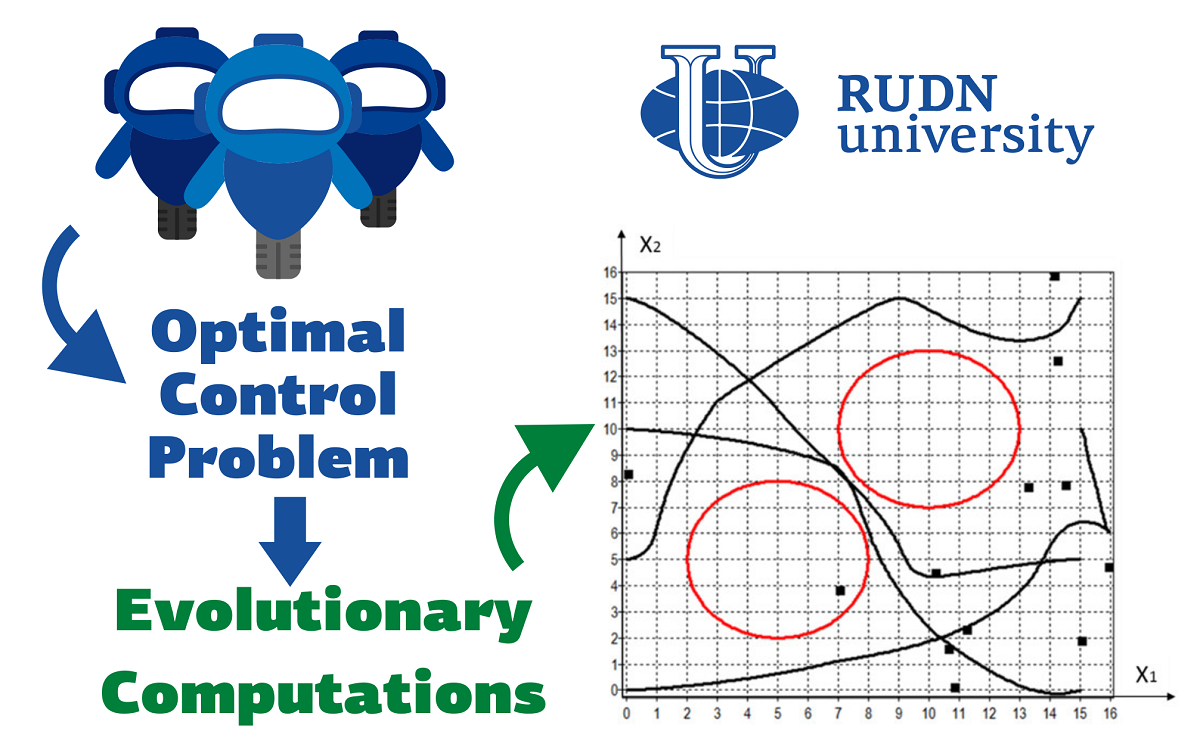RUDN University Scientist Compares Algorithms for Solving the Optimal Control Problem

“A group of robots should move from given initial states to terminal ones while avoiding obstacles in a minimum time. The problem belongs to the class of infinite-dimensional optimization. There are two approaches to solve it numerically. A direct approach is based on a discretization of the control function and reduction to the finite-dimensional optimization. An indirect approach is based on the Pontryagin maximum principle for the transition to the boundary value problem and its numerical solution”, said Sergey Konstantinov, Senior Lecturer of the на Department of Mechanics and Control Processes of RUDN University.
Scientists have proposed two approaches to solving the optimal control problem based on direct methods. In a test, robots should move from the starting point to the end point and not collide with obstacles and other robots. In the first approach, a group of robots was considered as a single object. In this case, the optimal control problem is reduced to a non-linear programming problem. This means that it cannot be reduced to a system of linear equations, which complicates the problem. In the second approach, they first find attractors for each robot — special points on the plane, that “tell” the robot how to avoid obstacles on the way. The results obtained were then used to solve the entire original problem. Calculations based on two approaches were implemented using evolutionary algorithms and the random search method. The researchers conducted 10 tests for each of the four evolutionary algorithms and the random search method and compared their performance.
The effectiveness of two approaches and 5 algorithms (the random search method and 4 evolutionary algorithms: the genetic algorithm, particle swarm optimization, bee algorithm, and gray wolf optimizer) was evaluated based on the value of the objective function — the function that needs to be minimized in the optimal control problem. The smaller it is, the better the algorithm performed. For the first approach, all evolutionary algorithms turned out to be more efficient than the random search method. The particle swarm optimization performed best, with an average value of 5.5 for the objective function. For the random search method, this value was almost three times higher — 15.83. For the second approach, the random search method also proved to be the least effective. The evolutionary algorithms worked about equally efficiently. In one of the tests, gray wolf optimizer gave the minimum value of the objective function — 2.49.
“Currently, there are no universal numerical methods for solving optimal control problems. We plan to continue the study of evolutionary algorithms and consider other new evolutionary algorithms, including hybrid ones”, said Sergey Konstantinov, Senior Lecturer of the Department of Mechanics and Mechatronics of RUDN University.
The results are published in the journal Applied Sciences. https://www.mdpi.com/2076-3417/11/15/7096
Matilda Pavlovna Mityaeva was born in 1925. In November 1942, she volunteered for frontline duty. She participated in the Great Patriotic War from November 1942 to June 1945 as part of the 53rd Infantry Division of the 475th Infantry Regiment. She was wounded twice.
The team led by Sergey Zyryanov, Head of the Department of General and Clinical Pharmacology, became the winner of the All-Russian competition of scientific projects "Technologies for Human Health".
RUDN University constantly adapts to the changes of the modern world and responds to challenges flexibly. This allows us to keep the standard of a world-class research university. The sphere of science is no exception. Peter Dokukin, Head of the Research Division, presented the updated R&D Programme at the meeting of the RUDN University Academic Council.
Matilda Pavlovna Mityaeva was born in 1925. In November 1942, she volunteered for frontline duty. She participated in the Great Patriotic War from November 1942 to June 1945 as part of the 53rd Infantry Division of the 475th Infantry Regiment. She was wounded twice.
The team led by Sergey Zyryanov, Head of the Department of General and Clinical Pharmacology, became the winner of the All-Russian competition of scientific projects "Technologies for Human Health".
RUDN University constantly adapts to the changes of the modern world and responds to challenges flexibly. This allows us to keep the standard of a world-class research university. The sphere of science is no exception. Peter Dokukin, Head of the Research Division, presented the updated R&D Programme at the meeting of the RUDN University Academic Council.